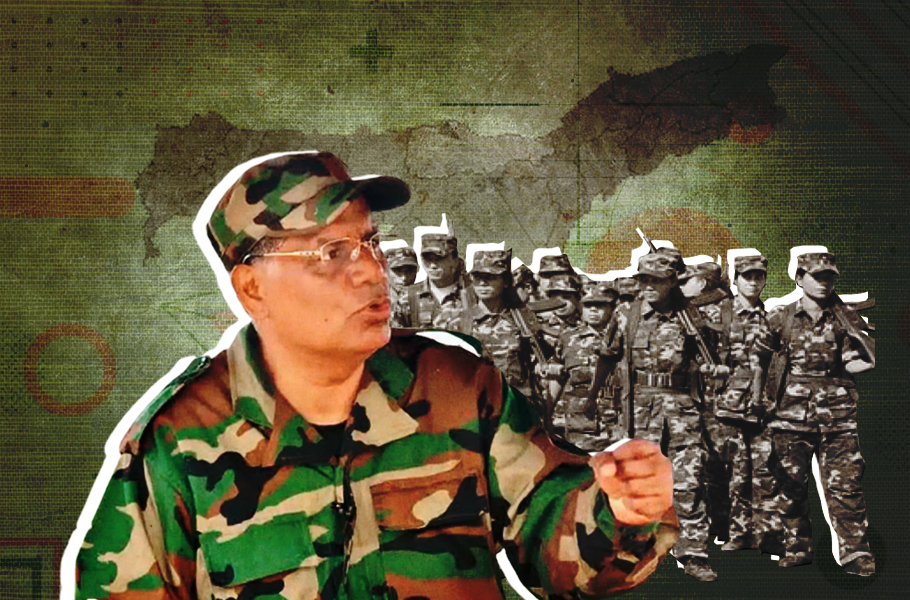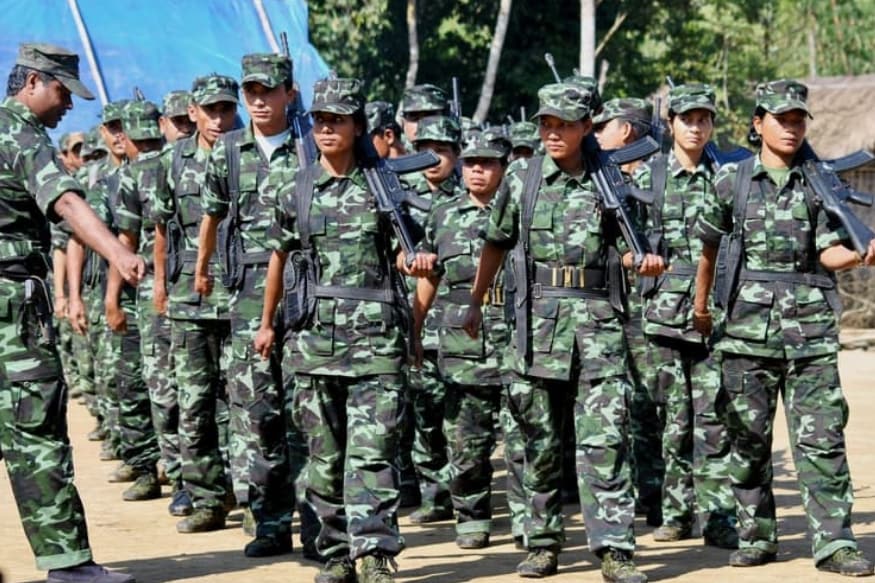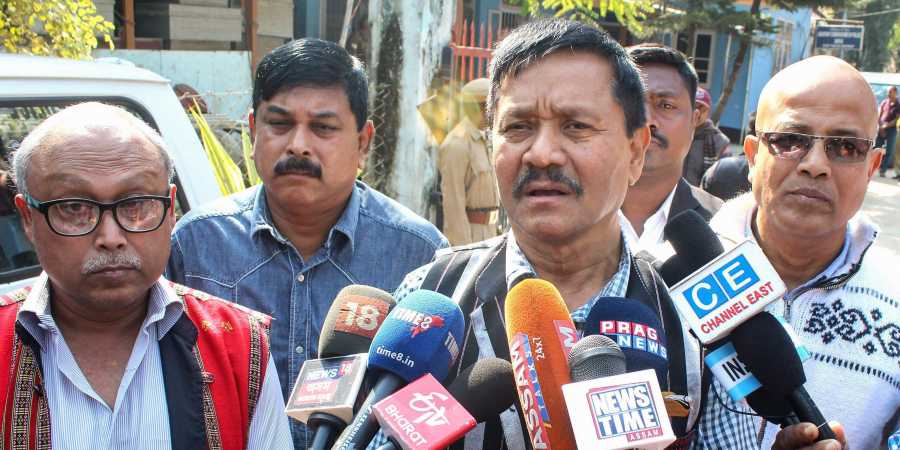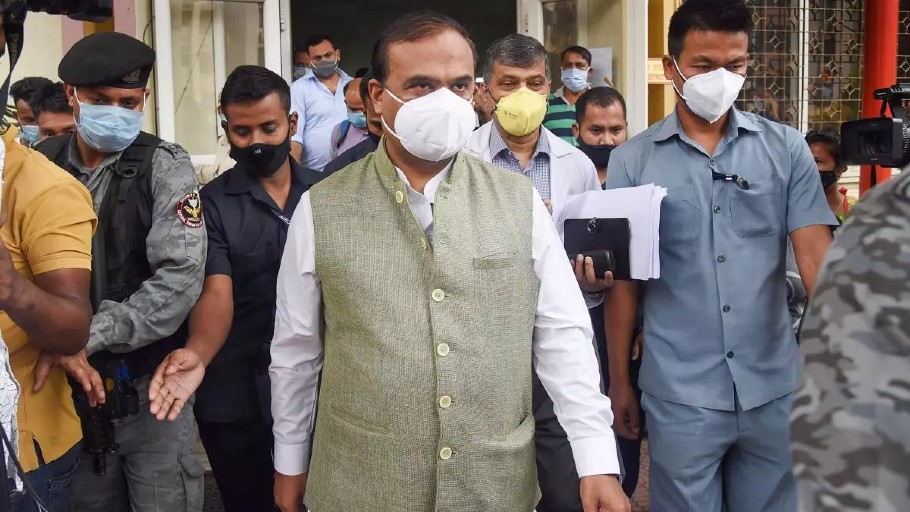
- Home
- News
- Analysis
- States
- Perspective
- Videos
- Education
- Entertainment
- Elections
- World Cup 2023
- Features
- Health
- Business
- Series
- Economy Series
- Earth Day
- Kashmir’s Frozen Turbulence
- India@75
- The legend of Ramjanmabhoomi
- Liberalisation@30
- How to tame a dragon
- Celebrating biodiversity
- Farm Matters
- 50 days of solitude
- Bringing Migrants Home
- Budget 2020
- Jharkhand Votes
- The Federal Investigates
- The Federal Impact
- Vanishing Sand
- Gandhi @ 150
- Andhra Today
- Field report
- Operation Gulmarg
- Pandemic @1 Mn in India
- The Federal Year-End
- The Zero Year
- Premium
- Science
- Brand studio
- Home
- NewsNews
- Analysis
- StatesStates
- PerspectivePerspective
- VideosVideos
- Entertainment
- ElectionsElections
- Sports
- Loading...
Sports - Features
- BusinessBusiness
- Premium
- Loading...
Premium

Why Paresh Barua joining peace talks may not bring the end of insurgency in Northeast
Paresh Barua, the militant leader, who was a first-class soccer goalkeeper before taking up arms forming the United Liberation Front of Asom (ULFA) in 1979, is known for being acrobatic with his words.

When one of the most reclusive militant leaders of the Northeast, Paresh Barua, expressed his intent to join peace talks, there was excitement and cheer. But the move does not call for celebration just yet as the region has a chequered history of peace processes. But before delving into the larger issue of how peace remained elusive in the multi-ethnic region despite numerous agreements...
When one of the most reclusive militant leaders of the Northeast, Paresh Barua, expressed his intent to join peace talks, there was excitement and cheer. But the move does not call for celebration just yet as the region has a chequered history of peace processes.
But before delving into the larger issue of how peace remained elusive in the multi-ethnic region despite numerous agreements and accords, Barua’s assertion at the outset should be taken with a generous dollop of salt.
Shifting goalposts
The militant leader, who was a first-class soccer goalkeeper before taking up arms forming the United Liberation Front of Asom (ULFA) in 1979, is known for being acrobatic with his words.
Barua had used such peace overtures as a stratagem to buy time to regroup whenever his chips were down in the past. Soon after the Royal Bhutan Army flushed out the Ulfa and other insurgent groups of India from its territory, conducting ‘Operation All Clear’ in 2003-04, Barua started sending feelers for talks. Earlier, in the 1990s too he had made similar overtures.
After several rounds of back-channel negotiations through Jnanpith Awardee writer late Mamoni Raisom Goswami, the undivided ULFA formed an 11-member People’s Consultative Group (PCG) headed by the litterateur in 2005 to prepare ground for talks with the Centre. The acclaimed Assamese writer was also a former colleague of the then Prime Minister Manmohan Singh at the Delhi University.
Despite her best efforts, the peace process could not move forward until Sheikh Hasina-led Awami League government handed over to India almost all the top leadership of the outfit including its chairman Arabinda Rajkhowa and deputy ‘commander-in-chief’ Raju Baruah in 2009. The Ulfa had been running camps in Bangladesh since 1989 and had close linkages with Pakistan’s Inter Service Intelligence (ISI).
The arrested leaders formally joined the peace process with the government of India in 2011. But the outfit’s self-styled commander-in-chief Paresh Barua, who had managed to escape the Bangladesh government’s crackdown, fleeing to Myanmar, refused to smoke the peace pipe. He formed his own splinter group the United Liberation Front of Asom-Independent (ULFA-I) in August 2012 along with his trusted aide Jibon Moran.
The Union home ministry in an affidavit before the Unlawful Activities (Prevention) Tribunal in Guwahati had said last year that the Barua-led ULFA (I) had been carrying out its activities from Ruili in Yunnan Province of China, bordering Myanmar.
Cornered
To operate out of China via Myanmar, Indian intelligence sources said, Barua needs help from insurgent groups of Myanmar. Ever since Myanmar’s military staged a coup, seizing power from Aung San Suu Kyi’s National League for Democracy (NLD), the Junta has intensified its offensive against ethnic insurgent groups. The Junta accuses these groups of helping People’s Defense Force (PSF) militias formed to fight the military takeover.
Caught in the turmoil, Indian rebel groups, including ULFA (I) holed up in Myanmar are desperately looking for a breather to hold out the current difficult phase. The raging Covid-pandemic further made life in jungles more difficult for the cadres of these outfits.

In April this year, ULFA (I) was forced to “relieve” Jibon Moran from the organisation on “health grounds”. After surrendering to Indian security forces, he tested positive for COVID-19 in the Dibrugarh central jail. Moran was the last top leader from the original ULFA, who had been with Barua.
As the going became tough, Barua was quick to latch onto newly appointed Assam Chief Minister Himanta Biswa Sarma’s appeal for peace. Barely five days after Sarma appealed to Barua to join the peace process, the latter responded positively announcing a unilateral ceasefire, on May 16, for three months.
Uncertainty ahead
Whether Barua, who turned 65 last month, will finally join the peace process this time after over four decades of waging a futile armed insurgency is as always a tricky question.
Even if he joins, it does not automatically guarantee a tangible solution. The peace talks have been going on with the other faction of the ULFA for a decade now without any solution in sight.
“Ever since the term of the Centre’s interlocutor for the talks expired in March last year, there has been no further discussion. We have not sat for talks since then,” said Anup Chetia, a senior leader of the pro-talk faction of the ULFA and an elder cousin brother of Barua.
In neighbouring Nagaland, the Union government and the NSCN (IM) have been trying to hammer out a “mutually acceptable” solution since 1997, without much success.
“The problem is the government has nothing much to offer to these outfits as already the states in north-east are enjoying ‘special provisions’ under the Constitution of India,” says a former army captain and Guwahati-based journalist PP Singh.
Overlapping interests, divergent groups professing the same cause and deep-rooted feelings of victimhood have made the peace processes further complex and peace deals unsustainable.
Ever since the then Assam Governor Sir Akbar Hyderi signed a 9-point agreement with moderate Naga leaders to establish peace in Naga hills areas of Assam on June 29, 1947, the government of India have entered into numerous peace accords with different groups across the region.

The purpose of these accords is broadly to preserve and protect the rights and identity of ethnic groups by redistribution of authority, often by providing territorial means of representation and self-governance.
Adhering to this conflict-resolution concept, a separate state of Nagaland was carved out of Assam in 1963 following the signing of 16-point statehood agreement between the Government of India and the Naga People’s Convention on July 26, 1960.
Subsequently, many more states such as Meghalaya in 1972 and Mizoram in 1987, and autonomous territorial councils like Bodoland Territorial Council, Dima Hasao Autonomous District Council and Karbi Anglong Autonomous District Council, to name a few, have been formed to address ethnic aspirations.
Barring the historic peace deal signed by the Rajiv Gandhi government with Mizo National Front (MNF) leader Laldenga on June 30, 1986 that granted statehood to Mizoram, none of the agreements yielded lasting peace. Even the Mizo peace accord needed to be followed up by signing of separate pacts with Bru and Hmar ethnic groups.
No end in sight
“Although peace accords might constitute milestones, they cannot be expected to either end violence conclusively or solve the problems that led to the conflict. In other words, peace accords intrinsically comprise neither landmarks nor final destinations,” writes Swarna Rajagopalan in Peace Accords in Northeast India: Journey over Milestones, a comprehensive policy study on 13 major peace agreements signed in the north-east between 1949 and 2005.
“The accord-making experiences in Northeast India have barely shown any characteristic of processes that would lead to a lasting peace. Peace accords have not been inclusive; the provisions agreed upon with one group frequently and patently conflict with the interests of others; and the accords either contain provisions to address core conflict issues in a manner that cannot be implemented or they do not deal with core issues at all,” Rajagopalan further argues.
Taking the argument forward one can immediately cite the instance of Nagaland where peace accords were signed with groups that were not main actors in the conflict and the agreements were also not inclusive.
Be it the nine-point agreement of 1949, 16-point agreement of 1960 or the Shillong Accord of 1975, the protagonist of the Naga insurgency late Angami Zapu Phizo was not made the party.
Again, the agreements did not address the aspirations of Naga communities, residing in Manipur, Arunachal Pradesh and Assam. No wonder that post-Shillong Accord, the Nagas outside Nagaland mostly formed the fulcrum of Naga militancy.
The demand for integration of contiguous Naga inhabited areas under one administrative umbrella triggers hostile resistance in the three states, particularly in Manipur. Here the Naga identity rights are clearly in conflict with the Meitei or the Assamese identities or the identities of the smaller ethnic groups residing within the Naga-dominated areas of these states.
Money, power & vested interests
The other major roadblock to conflict resolution in the region is the allurement of money and power attached to militancy and vested interests of some to keep the pot churning.
Militancy in the northeast—to quote a leading intellectual of Assam, Dhirendra Nath Bezboruah—has evolved into a cottage industry. It is a sure shortcut to riches in the underdeveloped region where unemployment is a major problem.
Most youths take up arms to earn easy money through extortion. Moreover, surrendered militants also get attractive rehabilitation packages.
Such allurement has created a cycle of insurgency, which the government has not been able to break.
In the past decade alone, multiple agreements have been signed with various militant groups to bring peace in two small hill districts of Assam—Karbi Anglong and Dima Hasao. But soon after signing the accord with one group, another outfit sprouts up to continue with the same demand.
Assam Chief Minister Himanta Biswa Sarma earlier this month told the assembly that a peace treaty with Karbi insurgent groups is in the offing. Over 1,000 rebels, belonging to five Karbi insurgent outfits such as the People’s Democratic Council of Karbi Longri (PDCK), Karbi Longri NC Hills Liberation Front (KLNLF), Karbi People’s Liberation Tiger (KPLT), Kuki Liberation Front (KLF) and United Peoples Liberation Army (UPLA) laid down arms at a surrender ceremony in February this year.

Only a decade ago, in November 2011, a tripartite agreement was signed between the Centre, the Assam government and the United People’s Democratic Solidarity (UPDS), which was formed with the merger of two insurgent groups the Karbi National Volunteers (KNV) and Karbi People’s Front (KPF). All the 568 UPDS cadres surrendered their arms in December that year and were subsequently given rehabilitation packages, including financial assistance of ₹150,000 each.
Many cadres of the disbanded UPDS were caught indulging in abduction and other illegal activities even after surrender. And as expected within a few years, the district witnessed renewed proliferation of ragtag armed outfits.
A similar situation has been seen in neighbouring Dima Hasao district, where the Centre and the Assam government sealed a pact with both factions of the Dima Halim Daoga (DHD) in 2012 to end eight years of conflicts that had stalled road and rail infrastructure projects passing through the area.
As usual, another group called Dima Hasao National Liberation Army (DNLA) emerged to continue the subversive activities after the agreement.
Three accords have been signed since 1993, the latest being in January 2000, to end conflict in Bodoland areas of Assam. Barely a year after the inking of the accord, the Assam government in February this year shared information about the formation of a new outfit named the Bodo State Liberation Tiger Force (BSLTF).
Over and above, there are influential vested-interest groups that thrive on raising the bogey of ‘exploitation’ and ‘threat’ to the region’s identity and culture.
These groups are now trying to keep alive the long-drawn narrative of Assam being swamped by illegal migrants from Bangladesh even after the updated National Register of Citizens (NRC) published on August 31, 2019 virtually negated their claim.
The four-year-long Supreme Court -monitored exercise to identify bonafide residents left out 19 lakh names from the final list of citizens after painstakingly scrutinising identity documents including legacy data of 3.29 applicants.
Unless there is a genuine desire of all stakeholders to find a lasting peace and a holistic approach is adopted to achieve it, even if Barua joins the negotiating table, it will at best be another milestone not the end of conflict.

